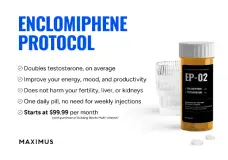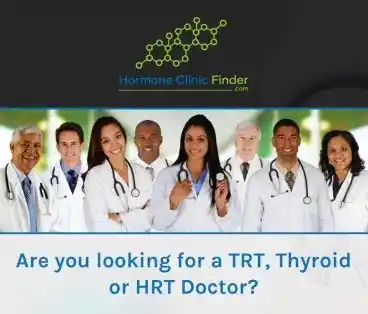As we very well know T s metabolites estradiol and DHT are needed in order to reap full beneficial effects of testosterone.
Ts metabolites estradiol and DHT are needed in healthy amounts to experience the full spectrum of testosterones beneficial effects on (cardiovascular health, brain health, libido, erectile function, bone health, tendon health, immune system, lipids, and body composition).

Myths and Misconceptions:Estrogen-based Therapies in Females: Persistent misconceptions about the danger of estrogens, often attributed to synthetic progestins or the biological differences between synthetic hormones (like CEE, associated with CVD) and endogenous/bioidentical E2 (not associated with negative CVD outcomes).
Testosterone in Males: "myths about risk of prostate cancer and CVD along with its cultural associations with illegally enhancing athletic performance and toxic masculinity has created resistance to consider aging as a treatable condition of T deficiency."
E2 Suppression in Males: There is a misconception, even in some men's health clinics, to suppress E2 production in men. However, the review strongly argues against this, stating, "it is our view that E2 should not be suppressed in men, and in fact clinical trials of E2 supplementation should be considered in some men on TRT to decrease LDL cholesterol and improve endothelial function," due to its essential role in male bone, vascular, glucose, and lipid homeostasis, as well as libido and erectile function.
____________________________________________
*Anecdotally, male patients on TRT often enquire about their E2 levels due to fear of “too much female hormone.” Men s’ health clinics even prescribe aromatase inhibitors to suppress E2 production while raising T concentrations. However, we discussed the essential role of T’s conversion to E2 in male bone and vascular health, as well as glucose and lipid homeostasis (not to mention libido and erectile function). Thus, it is our view that E2 should not be suppressed in men, and in fact clinical trials of E2 supplementation should be considered in some men on TRT to decrease LDL cholesterol and improve endothelial function.
*Finally, current laboratory measurements of serum T and E2 levels (total or free) poorly reflect tissue and cellular T and E2 concentrations, catabolism, and elimination. Novel assays that provide accurate measures of cellular T and E2 outputs will be informative in clinical studies and are desperately needed.
Metabolic benefits afforded by estradiol and testosterone in both sexes: clinical considerations
Franck Mauvais-Jarvis, Sarah H. Lindsey
Testosterone (T) and 17β-estradiol (E2) are produced in male and female humans and are potent metabolic regulators in both sexes. When E2 and T production stops or decreases during aging, metabolic dysfunction develops and promotes degenerative metabolic and vascular disease. Here, we discuss the shared benefits afforded by E2 and T for metabolic function human females and males. In females, E2 is central to bone and vascular health, subcutaneous adipose tissue distribution, skeletal muscle insulin sensitivity, anti inflammatory immune function, and mitochondrial health. However, T also plays a role in female skeletal, vascular, and metabolic health. In males, T’s conversion to E2 is fundamental to bone and vascular health, as well as prevention of excess visceral adiposity and the promotion of insulin sensitivity via activation of the estrogen receptors. However, T and its metabolite dihydrotestosterone also prevent excess visceral adiposity and promote skeletal muscle growth and insulin sensitivity via activation of the androgen receptor. In conclusion, T and E2 are produced in both sexes at sex-specific concentrations and provide similar and potent metabolic benefits. Optimizing levels of both hormones may be beneficial to protect patients from cardiometabolic disease and frailty during aging, which requires further study.
Introduction
Testosterone (T) and 17β-estradiol (E2) are considered male and female sex hormones, respectively, because they are secreted by gonads in the circulation at sex-specific concentrations and are involved in sexual differentiation and reproduction. E2, however, is not exclusively a female hormone since, for example, itis essential for erection and libido in male individuals (1). Likewise, T is not exclusively a male hormone, as it is essential forl ibido in female individuals (2). Most importantly, E2 and T are central to metabolic homeostasis of most cells and in both sexes.When E2 and T production stops or decreases during aging, metabolic dysfunction develops and promotes degenerative metabolic and vascular disease. Understanding the sex-specific and shared benefits of E2 and T in metabolic function in both sexes is critical to medicine and healthy aging. Here, we analyze sex differences and similarities in E2 and T benefits for metabolic homeostasis in male and female humans, including glucose and lipid metabolism, bone, vascular, adipose, muscle, and immune functions, and the prevention of metabolic dysfunction leading to cardiometabolic disease. We use the terms male and femalet o describe the biological sex of human subjects through the paper and we specify when animal studies are discussed. For details on mechanisms of E2 and T’s actions, we will refer to recent and landmark reviews.
Origin of T and E2 in both sexes
In males, all T is produced by Leydig cells of the testis. T behaves as a hormone by binding the androgen receptor (AR), and also behaves as a prohormone that is converted in peripheral tissues to E2 or dihydrotestosterone (DHT), a pure AR agonist that cannot be converted to E2. In males, most E2 (80%) is formed via aromatization of circulating T in the periphery. The testes directly produce approximately20% of circulating E2 (3) (Figure 1A). Circulating concentrations of E2 in males are half of those of females and are essential to metabolic homeostasis, as we will discuss. In females of reproductive age,the granulosa cells of the ovaries produce E2, the major circulating estrogen (Figure 1B). After menopause, estrone (E1) becomes the major circulating estrogen (4). E1 is produced by aromatization from the adrenal androgen androstenedione in adipose tissue (5) (Figure1C). E1 is a weak estrogen and should be considered a reservoir of the more potent E2 in postmenopausal females. E2 is produced locally in extra-ovarian tissues and acts locally as a paracrine and intracrine factor (Figure 1). In females, T is the most abundant circulating active sex steroid throughout the life span (Figure 2). In females of reproductive age, T is produced by the ovary (25%), the adrenal gland (25%), and in peripheral tissues (50%), following conversion from circulating androstenedione (equally produced by the ovaryand the adrenal gland) (6–9) (Figure 1B). After natural menopause, ovarian T production decreases slowly. T is mainly produced by the ovaries (50%) and via peripheral conversion from androstenedione(40%) mainly of adrenal origin (6–9). Direct adrenal production of T is minor (around 10%) (Figure 1C). Although T is ten times less abundant in the blood of females than males, in females across the life span, circulating T is 5–50 times more abundant than E2 (Figure2), the implications of which we will discuss below.
E2 promotes metabolic homeostasis in females
In females of reproductive age, E2 is instrumental to skeletal, vascular, and energy homeostasis. The central role of E2 in maintenance of bone metabolism, the detrimental effect of postmenopausal E2 deficiency on osteopenia and osteoporosis, and their prevention by estrogen therapy in postmenopausal females is evidence-based medicine (10, 11) and will not be discussed here.
*E2 promotes female vascular function and health
*E2 promotes subcutaneous lipid storage in females
*E2 promotes glucose and lipid homeostasis in females
*E2 promotes mitochondrial fitness in females
The importance of T in female metabolic homeostasis
*T production favors healthy body composition in females
*Physiological T production protects female vascular health
T promotes metabolic homeostasis in males
In males, T is a hormone that binds the AR and a prohormone that provides a circulating reservoir of E2 and DHT. T deficiency in males leads to sexual dysfunction, depressed mood, anemia, osteoporosis, metabolic syndrome and T2D, and CVD. In the following section, we discuss the effect of T on metabolic homeostasis separated into the effects induced by E2 versus T/DHT
*T-to-E2 conversion maintains bone mass in males
*T is an anti-obesity hormone in males
*T prevents T2D in males
*Endogenous T promotes cardiovascular health in males
Conclusions and clinical implications
T and E2 are produced in both sexes at sex-specific concentrations and share similar and potent metabolic functions. The loss of E2 after menopause in females and the decrease in T in aging males both produce metabolic dysfunction and are serious health threats leading to cardiometabolic disease and frailty. The reason that these important metabolic mediators are not prescribed more often relates to myths about the danger of hormones. In particular, there are persistent misconceptions about the risks of estrogen-based therapies in females (148–154). Apart from the purported risk of breast cancer, which has been attributed to synthetic progestins, confusion about the risks of estrogens lies in the too often ignored biological difference between synthetic hormones like CEE, which is associated with CVD, and endogenous and bioidentical E2, which is not associated with negative CVD outcomes. In the case of males and T, myths about risk of prostate cancer and CVD along with its cultural associations with illegally enhancing athletic performance and toxic masculinity has created resistance to consider aging as a treatable condition of T deficiency (155).
It is not known what the role of T in female metabolism is. Is it mediated via T or DHT acting on AR, as animal studies suggest, or is T an additional reservoir for local E2 synthesis in tissues? Clinical trials assessing the effect of T supplementation in postmenopausal women to achieve serum concentrations in the upper limit of female physiology should be considered to ascertain its ability to improve muscle and metabolic function along with its beneficial effects on libido.
Anecdotally, male patients on TRT often enquire about their E2 levels due to fear of “too much female hormone.” Men s’ health clinics even prescribe aromatase inhibitors to suppress E2 production while raising T concentrations. However, we discussed the essential role of T’s conversion to E2 in male bone and vascular health, as well as glucose and lipid homeostasis (not to mention libido and erectile function). Thus, it is our view that E2 should not be suppressed in men, and in fact clinical trials of E2 supplementation should be considered in some men on TRT to decrease LDL cholesterol and improve endothelial function.
Finally, current laboratory measurements of serum T and E2 levels (total or free) poorly reflect tissue and cellular T and E2 concentrations, catabolism, and elimination. Novel assays that provide accurate measures of cellular T and E2 outputs will be informative in clinical studies and are desperately needed.
Ts metabolites estradiol and DHT are needed in healthy amounts to experience the full spectrum of testosterones beneficial effects on (cardiovascular health, brain health, libido, erectile function, bone health, tendon health, immune system, lipids, and body composition).
Detailed Briefing Document: Metabolic Benefits of Estradiol and Testosterone in Both Sexes
Source: Mauvais-Jarvis, F., & Lindsey, S. H. (2024). Metabolic benefits afforded by estradiol and testosterone in both sexes: clinical considerations. J Clin Invest, 134(17), e180073.Executive Summary
This briefing document summarizes key findings from the review "Metabolic benefits afforded by estradiol and testosterone in both sexes: clinical considerations" by Mauvais-Jarvis and Lindsey (2024). The central theme is that Testosterone (T) and 17β-estradiol (E2) are potent metabolic regulators in both males and females, challenging traditional views of them as exclusively "male" or "female" hormones. The document highlights the shared metabolic benefits of these hormones, the detrimental effects of their decline with aging, and the importance of optimizing their levels to protect against cardiometabolic disease and frailty.Main Themes and Most Important Ideas/Facts
1. T and E2 are Essential Metabolic Regulators in Both Sexes, Not Exclusively Sex-Specific Hormones.
- Challenging Traditional Views: The review explicitly states, "Testosterone (T) and 17β-estradiol (E2) are considered male and female sex hormones, respectively... E2, however, is not exclusively a female hormone since, for example, it is essential for erection and libido in male individuals (1). Likewise, T is not exclusively a male hormone, as it is essential for libido in female individuals (2)."
- Central to Metabolic Homeostasis: Both hormones are "central to metabolic homeostasis of most cells and in both sexes."
- Aging and Metabolic Dysfunction: A critical point is that "When E2 and T production stops or decreases during aging, metabolic dysfunction develops and promotes degenerative metabolic and vascular disease."
2. Origin and Relative Abundance of T and E2 in Males and Females.
- Males:T Production: All T is produced by Leydig cells of the testis.
- E2 Production: Most E2 (80%) in males is formed via aromatization of circulating T in peripheral tissues. The testes directly produce approximately 20% of circulating E2.
- Concentrations: Circulating E2 concentrations in males are about half those in females.
- Females:E2 Production (Reproductive Age): Granulosa cells of the ovaries produce E2, the major circulating estrogen.
- E2 Production (Post-Menopause): Estrone (E1) becomes the major circulating estrogen, produced by aromatization from adrenal androgen androstenedione in adipose tissue. E1 acts as a reservoir for the more potent E2.
- T Production: T is the most abundant circulating active sex steroid throughout the female lifespan. It's produced by the ovary (25%), adrenal gland (25%), and peripheral tissues (50%) from androstenedione. After menopause, ovarian T production decreases slowly, with peripheral conversion becoming a larger contributor.
- Concentrations: "Although T is ten times less abundant in the blood of females than males, in females across the life span, circulating T is 5–50 times more abundant than E2."
3. Shared Metabolic Benefits of E2 and T.
The review emphasizes that both hormones provide "similar and potent metabolic benefits" across sexes.In Females:
- E2 is Central to:Bone and vascular health.
- Subcutaneous adipose tissue (SCAT) distribution: E2 promotes SCAT expansion and inhibits visceral adipose tissue (VAT) development.
- Skeletal muscle insulin sensitivity.
- Anti-inflammatory immune function.
- Mitochondrial health: E2 promotes mitochondrial quality, higher respiratory capacities, biogenesis, and resistance to oxidative stress.
- E2's Vascular Protection:Promotes vasodilation (via nitric oxide production).
- Prevents detrimental remodeling (fibrosis, stiffening, calcification) of arteries.
- Lowers atherogenic lipids and decreases systemic inflammation.
- Timing Hypothesis: "E2 therapy started at the time of menopause in a woman with healthy arteries prevents the development of CVD, but beyond a certain point, the age- and E2 deficiency–related damage renders the effects of E2 less beneficial and potentially harmful."
- E2's Glucose and Lipid Homeostasis:Antidiabetic hormone; deficiency increases risk of T2D.
- Estrogen therapy reduces T2D incidence and improves glycemia.
- Enhances insulin sensitivity in liver and skeletal muscle.
- Protects beta-cell function and insulin secretion.
- Beneficial effects on cholesterol: reduces LDL/HDL ratio, lipoprotein (a), and inflammatory markers.
- T's Role in Females:Plays a role in female skeletal, vascular, and metabolic health.
- Supraphysiological T levels are associated with insulin resistance and visceral obesity.
- Physiological T levels, even though lower than E2, are always more abundant than E2 in females.
- T treatment in androgen-deficient women "increased lean mass (bone density and muscle mass) and decreased fat mass... improved insulin resistance... and decreased inflammation."
- Physiological T levels protect female vascular health. Low endogenous T "has been prospectively associated with increased all-cause mortality and incident CVD independent of other risk factors."
In Males:
- T's actions often mediated through conversion to E2 or DHT.
- T's Conversion to E2 is Fundamental to:Bone and vascular health.
- Prevention of excess visceral adiposity.
- Promotion of insulin sensitivity (via estrogen receptors).
- Beta-cell protection: male human β cells express aromatase, and T's conversion to E2 enhances insulin secretion and protects β cells from damage.
- T (and DHT) via Androgen Receptor (AR) Action:Prevents excess visceral adiposity.
- Promotes skeletal muscle growth and insulin sensitivity.
- T has anti-obesity properties mediated via AR actions, primarily in skeletal muscle, not directly in adipocytes.
- T prevents T2D by decreasing VAT, increasing skeletal muscle mass and glycolytic capacity, and improving beta-cell function.
- T's conversion to DHT via 5α-reductase 1 (5α-R1) is necessary for insulin sensitivity and enhances insulin secretion in male beta-cells.
- Endogenous T and Cardiovascular Health in Males:"Endogenous T directly protects the male cardiovascular system." It is a potent vasodilator and benefits blood pressure.
- Low serum T is associated with increased CVD risk.
- TRT (testosterone replacement therapy) in hypogonadal men has shown to reduce all-cause mortality, MI, and stroke, and is considered safe regarding CVD.
- T's vascular benefits in males are significantly mediated by its conversion to E2.
- T/E2 Ratio: A low T/E2 ratio (below 120 pg/mL) is associated with increased systemic inflammation and higher risk of adverse cardiovascular events in men with atherosclerosis. This suggests that "higher E2 production in the face of low T reflects an endogenous compensatory increase in aromatase activity to lower E2 output in tissue and developing atherosclerosis."
4. Clinical Implications and Misconceptions.
Optimizing Hormone Levels: The authors conclude that "Optimizing levels of both hormones may be beneficial to protect patients from cardiometabolic disease and frailty during aging, which requires further study."Myths and Misconceptions:Estrogen-based Therapies in Females: Persistent misconceptions about the danger of estrogens, often attributed to synthetic progestins or the biological differences between synthetic hormones (like CEE, associated with CVD) and endogenous/bioidentical E2 (not associated with negative CVD outcomes).
Testosterone in Males: "myths about risk of prostate cancer and CVD along with its cultural associations with illegally enhancing athletic performance and toxic masculinity has created resistance to consider aging as a treatable condition of T deficiency."
E2 Suppression in Males: There is a misconception, even in some men's health clinics, to suppress E2 production in men. However, the review strongly argues against this, stating, "it is our view that E2 should not be suppressed in men, and in fact clinical trials of E2 supplementation should be considered in some men on TRT to decrease LDL cholesterol and improve endothelial function," due to its essential role in male bone, vascular, glucose, and lipid homeostasis, as well as libido and erectile function.
5. Future Research Needs.
- Further study is needed to ascertain the ability of T supplementation in postmenopausal women (within physiological range) to improve muscle and metabolic function.
- Novel assays providing accurate measures of cellular T and E2 outputs are "desperately needed" as current laboratory measurements poorly reflect tissue and cellular concentrations.
Key Takeaways
- Interdependence of T and E2: T and E2 are not isolated "male" or "female" hormones but are interconnected and crucial for metabolic health in both sexes. T often acts as a prohormone, converting to E2 or DHT, with E2 playing a critical role in metabolic benefits for both males and females.
- Aging-Related Decline: The natural decline of T and E2 with aging contributes significantly to metabolic dysfunction and increased risk of chronic diseases.
- Clinical Potential: Optimizing levels of both hormones, considering their sex-specific concentrations and interconversions, holds promise for preventing cardiometabolic disease and frailty.
- Addressing Misinformation: Dispelling myths about hormone therapy, particularly regarding the distinction between synthetic and bioidentical hormones and the essential role of E2 in male health, is crucial for improving patient care.
Q1: What are the primary metabolic roles of Estradiol (E2) and Testosterone (T) in both males and females?
A1: Both E2 and T are crucial metabolic regulators in human males and females. When their production declines with aging, metabolic dysfunction emerges, leading to degenerative metabolic and vascular diseases. In females, E2 is vital for bone and vascular health, subcutaneous fat distribution, skeletal muscle insulin sensitivity, anti-inflammatory immune function, and mitochondrial health. T also contributes to female skeletal, vascular, and metabolic health. In males, the conversion of T to E2 is essential for bone and vascular health, preventing excess visceral fat, and promoting insulin sensitivity. T and its metabolite dihydrotestosterone (DHT) also prevent excess visceral fat and promote skeletal muscle growth and insulin sensitivity by activating the androgen receptor.Q2: How do E2 and T contribute to bone and vascular health in both sexes?
A2: E2 is central to bone and vascular health in females. Early E2 deficiency in women due to surgical oophorectomy, premature ovarian insufficiency, or early menopause increases the risk of cardiovascular disease (CVD) and mortality. E2 protects arteries by promoting vasodilation, preventing detrimental remodeling (fibrosis, stiffening, calcification), lowering atherogenic lipids, and decreasing systemic inflammation. In males, T's conversion to E2 by aromatase is fundamental for normal bone development and maintaining healthy bone metabolism during aging. E2 accounts for approximately 70% of bone mass maintenance in males, with T contributing the remaining 30%. Endogenous T also directly protects the male cardiovascular system as a potent vasodilator, and its conversion to E2 is vital for male vascular health, likely by increasing nitric oxide (NO) production and improving lipid profiles.Q3: What is the significance of T's conversion to E2 and DHT in males, and how do these pathways influence metabolic health?
A3: In males, T acts both as a hormone by binding to the androgen receptor (AR) and as a prohormone that can be converted in peripheral tissues to E2 or DHT. Most E2 (80%) in males is formed via aromatization of circulating T. This conversion to E2 is crucial for bone and vascular health, prevention of visceral fat accumulation, and promotion of insulin sensitivity. T's conversion to DHT, a pure AR agonist, also prevents excess visceral adiposity and promotes skeletal muscle growth and insulin sensitivity via AR activation. Both E2 (via ERα) and DHT (via AR) contribute to insulin sensitivity in males. Furthermore, T's conversion to DHT in pancreatic β cells enhances glucose-stimulated insulin secretion and amplifies the insulinotropic action of GLP-1, while E2 conversion in β cells protects them from damage.Q4: How do E2 and T affect glucose and lipid metabolism in females?
A4: E2 is an antidiabetic hormone in females; its deficiency increases the risk of type 2 diabetes (T2D). Estrogen therapy in postmenopausal women reduces the incidence of new-onset T2D and improves glycemic control, including fasting glucose, insulin, and HbA1c. E2 enhances insulin sensitivity in the liver and skeletal muscle and protects muscle mitochondrial function. It also promotes subcutaneous lipid storage, which is a major evolutionary function to prepare for pregnancy, and inhibits visceral adipose tissue (VAT) development. E2 deficiency after menopause leads to VAT accumulation, which can be reduced by estrogen therapy. While high T levels in females (e.g., in PCOS) can lead to insulin resistance and visceral obesity, physiological T levels in females increase lean mass, decrease fat mass, and improve insulin sensitivity.Q5: How do E2 and T impact body composition and fat distribution in both sexes?
A5: In females, E2 promotes the accumulation of subcutaneous adipose tissue (SCAT) and inhibits visceral adipose tissue (VAT) development, contributing to the female gynoid phenotype. E2 deficiency after menopause leads to VAT accumulation. Physiological T levels in females increase lean mass (bone and muscle) and decrease fat mass. In males, T is an anti-obesity hormone. T deficiency promotes VAT accumulation and metabolic syndrome. T's aromatization to E2 is critical in preventing visceral adiposity in males, and T/DHT acting on AR in skeletal muscle also prevents VAT accumulation. Overexpression of AR in male muscle cells increases muscle mass, elevates metabolic rate, and reduces adipose tissue mass.Q6: What are the risks associated with hormone levels outside the physiological range or with certain synthetic hormones?
A6: While physiological levels of E2 and T offer significant metabolic benefits, levels outside the optimal range or the use of certain synthetic hormones can pose risks. In females, high-dose T administration has been associated with atherosclerosis. In males, high doses of oral conjugated equine estrogens (CEE) or synthetic estrogens like diethylstilbestrol or ethinyl estradiol used in early trials or gender-affirming therapy have been linked to increased incidence of myocardial infarction (MI) and atherothrombotic disease. This highlights the importance of the "timing hypothesis" for estrogen therapy in females, suggesting benefits when initiated close to menopause in women with healthy arteries, but potential harm if started later with established vascular damage, or if synthetic hormones are used instead of bioidentical E2. Similarly, suppressing E2 levels in men on testosterone replacement therapy (TRT) is generally not recommended, as E2 is crucial for male bone, vascular, glucose, and lipid homeostasis.Q7: What is the "timing hypothesis" regarding menopausal estrogen therapy and cardiovascular health?
A7: The "timing hypothesis" suggests that endogenous E2 prevents or slows the progression of cardiovascular disease (CVD) but does not reverse established vascular damage. If E2 is not restored early after menopause, irreversible damage may develop that cannot be reversed by later estrogen therapy. This theory posits that E2 therapy initiated at the time of menopause in a woman with healthy arteries can prevent CVD development. However, beyond a certain point, age- and E2 deficiency-related damage can render the effects of E2 less beneficial and potentially harmful. Meta-analyses support this, showing that women initiating estrogen therapy within 10 years of menopause have a significant reduction in cardiovascular mortality and MI.Q8: What are some misconceptions about hormone therapy, particularly in males regarding E2?
A8: There are persistent misconceptions about the risks of hormone-based therapies. For females, concerns about breast cancer have often been attributed to synthetic progestins, and confusion exists regarding the biological differences between synthetic hormones like conjugated equine estrogens (CEE), which are associated with CVD, and endogenous or bioidentical E2, which are not. For males, myths about prostate cancer risk and CVD, combined with associations with illegal athletic enhancement, have created resistance to considering T deficiency as a treatable condition of aging. Many male patients on TRT express fear of "too much female hormone" (E2) and are often prescribed aromatase inhibitors to suppress E2. However, the sources emphasize the essential role of T's conversion to E2 in male bone and vascular health, as well as glucose and lipid homeostasis, and even libido and erectile function, arguing that E2 should not be suppressed in men.____________________________________________
*Anecdotally, male patients on TRT often enquire about their E2 levels due to fear of “too much female hormone.” Men s’ health clinics even prescribe aromatase inhibitors to suppress E2 production while raising T concentrations. However, we discussed the essential role of T’s conversion to E2 in male bone and vascular health, as well as glucose and lipid homeostasis (not to mention libido and erectile function). Thus, it is our view that E2 should not be suppressed in men, and in fact clinical trials of E2 supplementation should be considered in some men on TRT to decrease LDL cholesterol and improve endothelial function.
*Finally, current laboratory measurements of serum T and E2 levels (total or free) poorly reflect tissue and cellular T and E2 concentrations, catabolism, and elimination. Novel assays that provide accurate measures of cellular T and E2 outputs will be informative in clinical studies and are desperately needed.
Metabolic benefits afforded by estradiol and testosterone in both sexes: clinical considerations
Franck Mauvais-Jarvis, Sarah H. Lindsey
Testosterone (T) and 17β-estradiol (E2) are produced in male and female humans and are potent metabolic regulators in both sexes. When E2 and T production stops or decreases during aging, metabolic dysfunction develops and promotes degenerative metabolic and vascular disease. Here, we discuss the shared benefits afforded by E2 and T for metabolic function human females and males. In females, E2 is central to bone and vascular health, subcutaneous adipose tissue distribution, skeletal muscle insulin sensitivity, anti inflammatory immune function, and mitochondrial health. However, T also plays a role in female skeletal, vascular, and metabolic health. In males, T’s conversion to E2 is fundamental to bone and vascular health, as well as prevention of excess visceral adiposity and the promotion of insulin sensitivity via activation of the estrogen receptors. However, T and its metabolite dihydrotestosterone also prevent excess visceral adiposity and promote skeletal muscle growth and insulin sensitivity via activation of the androgen receptor. In conclusion, T and E2 are produced in both sexes at sex-specific concentrations and provide similar and potent metabolic benefits. Optimizing levels of both hormones may be beneficial to protect patients from cardiometabolic disease and frailty during aging, which requires further study.
Introduction
Testosterone (T) and 17β-estradiol (E2) are considered male and female sex hormones, respectively, because they are secreted by gonads in the circulation at sex-specific concentrations and are involved in sexual differentiation and reproduction. E2, however, is not exclusively a female hormone since, for example, itis essential for erection and libido in male individuals (1). Likewise, T is not exclusively a male hormone, as it is essential forl ibido in female individuals (2). Most importantly, E2 and T are central to metabolic homeostasis of most cells and in both sexes.When E2 and T production stops or decreases during aging, metabolic dysfunction develops and promotes degenerative metabolic and vascular disease. Understanding the sex-specific and shared benefits of E2 and T in metabolic function in both sexes is critical to medicine and healthy aging. Here, we analyze sex differences and similarities in E2 and T benefits for metabolic homeostasis in male and female humans, including glucose and lipid metabolism, bone, vascular, adipose, muscle, and immune functions, and the prevention of metabolic dysfunction leading to cardiometabolic disease. We use the terms male and femalet o describe the biological sex of human subjects through the paper and we specify when animal studies are discussed. For details on mechanisms of E2 and T’s actions, we will refer to recent and landmark reviews.
Origin of T and E2 in both sexes
In males, all T is produced by Leydig cells of the testis. T behaves as a hormone by binding the androgen receptor (AR), and also behaves as a prohormone that is converted in peripheral tissues to E2 or dihydrotestosterone (DHT), a pure AR agonist that cannot be converted to E2. In males, most E2 (80%) is formed via aromatization of circulating T in the periphery. The testes directly produce approximately20% of circulating E2 (3) (Figure 1A). Circulating concentrations of E2 in males are half of those of females and are essential to metabolic homeostasis, as we will discuss. In females of reproductive age,the granulosa cells of the ovaries produce E2, the major circulating estrogen (Figure 1B). After menopause, estrone (E1) becomes the major circulating estrogen (4). E1 is produced by aromatization from the adrenal androgen androstenedione in adipose tissue (5) (Figure1C). E1 is a weak estrogen and should be considered a reservoir of the more potent E2 in postmenopausal females. E2 is produced locally in extra-ovarian tissues and acts locally as a paracrine and intracrine factor (Figure 1). In females, T is the most abundant circulating active sex steroid throughout the life span (Figure 2). In females of reproductive age, T is produced by the ovary (25%), the adrenal gland (25%), and in peripheral tissues (50%), following conversion from circulating androstenedione (equally produced by the ovaryand the adrenal gland) (6–9) (Figure 1B). After natural menopause, ovarian T production decreases slowly. T is mainly produced by the ovaries (50%) and via peripheral conversion from androstenedione(40%) mainly of adrenal origin (6–9). Direct adrenal production of T is minor (around 10%) (Figure 1C). Although T is ten times less abundant in the blood of females than males, in females across the life span, circulating T is 5–50 times more abundant than E2 (Figure2), the implications of which we will discuss below.
E2 promotes metabolic homeostasis in females
In females of reproductive age, E2 is instrumental to skeletal, vascular, and energy homeostasis. The central role of E2 in maintenance of bone metabolism, the detrimental effect of postmenopausal E2 deficiency on osteopenia and osteoporosis, and their prevention by estrogen therapy in postmenopausal females is evidence-based medicine (10, 11) and will not be discussed here.
*E2 promotes female vascular function and health
*E2 promotes subcutaneous lipid storage in females
*E2 promotes glucose and lipid homeostasis in females
*E2 promotes mitochondrial fitness in females
The importance of T in female metabolic homeostasis
*T production favors healthy body composition in females
*Physiological T production protects female vascular health
T promotes metabolic homeostasis in males
In males, T is a hormone that binds the AR and a prohormone that provides a circulating reservoir of E2 and DHT. T deficiency in males leads to sexual dysfunction, depressed mood, anemia, osteoporosis, metabolic syndrome and T2D, and CVD. In the following section, we discuss the effect of T on metabolic homeostasis separated into the effects induced by E2 versus T/DHT
*T-to-E2 conversion maintains bone mass in males
*T is an anti-obesity hormone in males
*T prevents T2D in males
*Endogenous T promotes cardiovascular health in males
Conclusions and clinical implications
T and E2 are produced in both sexes at sex-specific concentrations and share similar and potent metabolic functions. The loss of E2 after menopause in females and the decrease in T in aging males both produce metabolic dysfunction and are serious health threats leading to cardiometabolic disease and frailty. The reason that these important metabolic mediators are not prescribed more often relates to myths about the danger of hormones. In particular, there are persistent misconceptions about the risks of estrogen-based therapies in females (148–154). Apart from the purported risk of breast cancer, which has been attributed to synthetic progestins, confusion about the risks of estrogens lies in the too often ignored biological difference between synthetic hormones like CEE, which is associated with CVD, and endogenous and bioidentical E2, which is not associated with negative CVD outcomes. In the case of males and T, myths about risk of prostate cancer and CVD along with its cultural associations with illegally enhancing athletic performance and toxic masculinity has created resistance to consider aging as a treatable condition of T deficiency (155).
It is not known what the role of T in female metabolism is. Is it mediated via T or DHT acting on AR, as animal studies suggest, or is T an additional reservoir for local E2 synthesis in tissues? Clinical trials assessing the effect of T supplementation in postmenopausal women to achieve serum concentrations in the upper limit of female physiology should be considered to ascertain its ability to improve muscle and metabolic function along with its beneficial effects on libido.
Anecdotally, male patients on TRT often enquire about their E2 levels due to fear of “too much female hormone.” Men s’ health clinics even prescribe aromatase inhibitors to suppress E2 production while raising T concentrations. However, we discussed the essential role of T’s conversion to E2 in male bone and vascular health, as well as glucose and lipid homeostasis (not to mention libido and erectile function). Thus, it is our view that E2 should not be suppressed in men, and in fact clinical trials of E2 supplementation should be considered in some men on TRT to decrease LDL cholesterol and improve endothelial function.
Finally, current laboratory measurements of serum T and E2 levels (total or free) poorly reflect tissue and cellular T and E2 concentrations, catabolism, and elimination. Novel assays that provide accurate measures of cellular T and E2 outputs will be informative in clinical studies and are desperately needed.
Last edited by a moderator:














